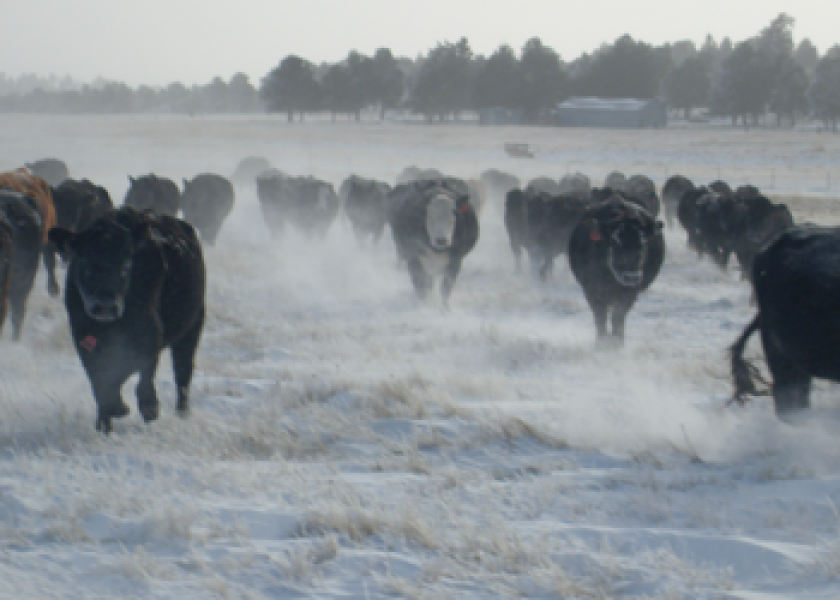Prussic Acid Poisoning, Forages and Livestock: Causes and Effects

Combinations of frost-damaged forages, resulting in the accumulation of prussic acid, and their ingestion, may prove fatal for livestock.
By: Jim Krantz, former SDSU Extension Cow/Calf Field Specialist
Crops such as sudangrass, sorghum or sorghum/sudangrass hybrids may produce cyanide when plant cells rupture after a frost, trampling or chopping. Once this toxin has been consumed, it quickly enters the bloodstream and is transported throughout the body of the animal.
Sorghum is much higher in prussic acid than sudangrass and is generally unsafe for grazing until the plant reaches maturity and no new growth is evident. Sudangrass and sorghum-sudangrass hybrids pose less of a threat to livestock when grazed. However, the new regrowth that may be present after clipping or grazing contains substantially higher levels of prussic acid and can be lethal to livestock. Sorghum, sudangrass or sorghum/sudangrass, when harvested for silage, may contain toxic levels of prussic acid. Therefore, it is recommended that this silage not be fed for three weeks following harvest.
Animals with prussic acid poisoning are often found dead as symptoms may occur within 15 to 20 minutes to a few hours after the animals consume a toxic forage. Physical signs include muscle tremors, intensive breathing, staggering and collapse. Membranes may also turn bright pink and, if animals have a bloody discharge, it will be bright cherry red in color. Salivation and runny eyes may be other visible signs.
Some management considerations for prussic acid prevention include the following:
- Do not graze sorghum, sudangrass or sorghum/sudangrass after a frost.
- Wait five to six days following a frost to return livestock to these forages
- Feed hay to livestock prior to turning them onto these forages.
- Do not graze short regrowth forage following hay or silage harvest or a period of close grazing.
For additional guidelines and information on potential prussic acid poisoning to livestock, please review Prussic Acid Poisoning of Livestock: Causes and Prevention.







